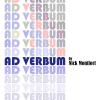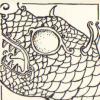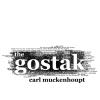Distinctive Puzzle Style
Recommendations by Sam Kabo Ashwell (Seattle)One of the most powerful techniques for rendering a game memorable is to build it around a unusual, interesting and consistent way of handling significant world interaction (or puzzles, if you prefer). It's also a difficult technique to do well. Here are some games that I think manage it; not all of them are necessarily good games, but they're all interesting and memorable.
Add a comment
 1. Savoir-Faire
1. Savoir-Faire
by Emily Short
(2002)
Average member rating:  (128 ratings)
(128 ratings)
Sam Kabo Ashwell says:
Features a conceptually simple, logical, massively versatile and consistent magic system, requiring only three nonstandard verbs. Better still, the magic system is integral to plot development, world-building and characterisation. The only flaw is that the learning-curve is steep at the lower end.
 2. Ad Verbum
2. Ad Verbum
by Nick Montfort
(2000)
Average member rating:  (132 ratings)
(132 ratings)
Sam Kabo Ashwell says:
Most puzzles are built around wordplay. Consistency isn't as good as it might be - some of the puzzles are meta-puzzles, some aren't, one or two don't really involve wordplay - but there's a solid core of intuitive, enjoyable, tricky and deeply satisfying puzzles.
3. Heroine's Mantle, by Andy Phillips (2000)
Average member rating:  (15 ratings)
(15 ratings)
Sam Kabo Ashwell says:
The player is a superhero; most puzzles involve the use of a limited and well-defined set of superpowers. Better still, there's an in-game section which introduces the player to how the powers work, one at a time. The game is very big and linear, so the powers aren't as versatile as they really should be; beyond the use of powers, there's little consistency in the puzzle design (beside a tendency towards the big and difficult).
 4. Metamorphoses
4. Metamorphoses
by Emily Short
(2000)
Average member rating:  (127 ratings)
(127 ratings)
Sam Kabo Ashwell says:
An ambitious exercise in simulation, and a paradigm of distinctive puzzle design: the player can manipulate the size and material of objects, so most of the puzzles rely on thinking up how things might be changed to more useful forms. Again, the learning-curve is initially a little steep.
5. Gilded, by John Evans (2005)
Average member rating:  (5 ratings)
(5 ratings)
Sam Kabo Ashwell says:
Massively ambitious and massively broken; the player can summon virtually any object in the game, but this rarely has any practical effects. A good example of how the technique is also a great tool with which to shoot yourself in the foot.
 6. The Gostak
6. The Gostak
by Carl Muckenhoupt
(2001)
Average member rating:  (88 ratings)
(88 ratings)
Sam Kabo Ashwell says:
This is all about the meta-puzzle: deciphering what the functional roles of the verbs and nouns are.
7. When Help Collides, by J. D. Berry (2002)
Average member rating:  (15 ratings)
(15 ratings)
Sam Kabo Ashwell says:
Two sections of this game - the frame-story and A Bleach of Etiquette - are noteworthy in puzzle terms. Both rely heavily on a large stable of nonstandard verbs. The frame-story's puzzle assumptions are rather too opaque to be playable; ABoE is more successful, though whether it's IF is debatable.
8. Changes, by David Given (2012)
Average member rating:  (17 ratings)
(17 ratings)
Sam Kabo Ashwell says:
All this game's puzzles are centred around manipulating the behaviour of animals, then stealing and using their particular abilities. The implementation could be smoother, but the concept is spot on.
 9. Gun Mute
9. Gun Mute
by C.E.J. Pacian
(2008)
Average member rating:  (153 ratings)
(153 ratings)
Sam Kabo Ashwell says:
If it can't be fixed with bullets and nonverbal communication, it ain't worth fixin'.
 10. Counterfeit Monkey
10. Counterfeit Monkey
by Emily Short
(2012)
Average member rating:  (233 ratings)
(233 ratings)
View this member's profile
See all lists by this member
Create your own Recommended List
1. Savoir-Faire
 (128 ratings)
(128 ratings)2. Ad Verbum
 (132 ratings)
(132 ratings) (15 ratings)
(15 ratings)4. Metamorphoses
 (127 ratings)
(127 ratings) (5 ratings)
(5 ratings)6. The Gostak
 (88 ratings)
(88 ratings) (15 ratings)
(15 ratings) (17 ratings)
(17 ratings)9. Gun Mute
 (153 ratings)
(153 ratings)10. Counterfeit Monkey
 (233 ratings)
(233 ratings)